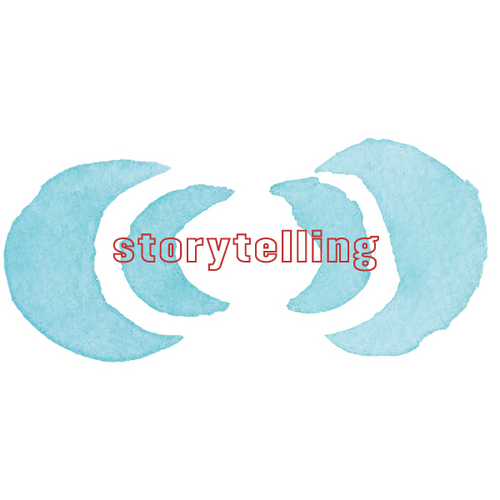Listen to the most recent edition of “State of the Human” here:
“It doesn’t matter what we bury: a body, a feeling, or an object. We expect it to stay buried. We put it aside and bid it farewell… But sometimes the grave is not a final resting place.” — so begins the podcast “State of the Human,” run by the the Stanford Storytelling Project (SSP), an arts program on campus that seeks to promote the art of storytelling within the undergraduate community.
Downloaded and listened to by thousands of people each month on iTunes and public radio, the podcast shares stories of relatable human experiences such as forgetting, lying, obsessing and fighting. Its production team includes a variety of producers, associate producers, event coordinators, directors and editors, many of whom are undergraduates or alumni with a passion for storytelling.
“This idea of sharing our human experiences with others is a magical thing that’s experiencing great turnout, especially since the radio aspect gets a niche crowd of people who love to talk or love to listen,” said associate producer Sienna White ’19.
Production time for each episodes fluctuates not just from year to year with the new team of SSP members but also because of the varying schedules of individual members.
The process begins with a pitch, although the pitch may come from outside the group. According to SSP senior producer ’17 Jackson Roach, people often discover SSP’s pitch page and decide to contribute.
Producers tinker with the pitch and story to make it as compelling as possible. The process isn’t entirely smooth, and even veteran producers find challenges when they’re feeling their way through a story. Roach gets stuck when working with a script.
“When you take it and transcribe it, you end up with this dry, sort of somewhat static, lifeless text,” Roach said. “Not that it’s totally lifeless, but it loses a lot of the color and nice human warmth of human voice when it’s in script form.”
SSP also holds weekly meetings in which involved students read each other’s work and develop their stories and storytelling skills. Stories range from senior theses to family life to personal passions.
Students can enroll in StoryCraft courses, which are hands-on courses sponsored by SSP, to learn how to create and craft their stories. The group also hosts live performances of StoryCraft students’ stories called StoryNights, which are streamed on Vimeo and Soundcloud.
Ena Alvarado ’18 spoke at last spring’s StoryNight about the development of an important friendship during freshman year.
“After telling this story multiple times to my classmates, I realized that the reason I felt compelled to share my best friend with the rest of world had nothing to do with her weirdness or badass-ness,” Alvarado said. “Instead, it had everything to do with my coming to terms with Stanford.”
Participation in the StoryCraft course gives just a taste of the SSP experience because of their limited quarter-long length, but members can continue to involve themselves beyond the class with longer periods of commitment. Roach has helped produce stories for SSP since his freshman year. During NSO, he heard a talk by Jonah Willihnganz, who founded SSP in 2007, and felt compelled to join.
“His point was that being able to tell a good story is the most important skill that any single person can have, which is a super bold claim, but he totally sold it for me,” Roach said.
According to Willihnganz, SSP’s various offerings allow students to learn lifelong skills in an approachable way, on their own terms.
“Unlike a lot of other programs, there are just a lot of different modes,” Willihnganz said. “You can just tell one story, and that’s it, or you can take all of our classes or apply for a grant or work for us.”
Maria Doer ’17 was among the students who received SSP’s Braden Storytelling Grant, which provides up to $3,000 for the research and creation of an audio documentary. She spent the summer in Nicaragua, obtaining more than 17 hours of recording for her story “Retaining Rondon: Creole Food in a Changing World.”
“Globalization is one of those buzz words,” Doer said. “In making ‘Retaining Rondon: Creole Food in a Changing World’ I wanted to approach this subject and its impact on the environment and communities in a personable way: through the topic of food. Whether you’re a farmer in Nicaragua or a teacher in Nebraska, everyone’s got to eat.”
Doer recorded, transcribed, cut and edited her piece until it was 26.5 minutes. With the support of the SSP team, the story was finished and published online.
According to Doer, creating the piece made her confront her own biases.
“I would ask myself: Am I doing justice to the experiences of those who I spoke with?” she said. “This is a question I will keep asking myself as I continue to explore storytelling and journalism.”
This is exactly the type of rumination that Willihnganz wants students to pursue. When he founded SSP, he hoped that storytelling could deeply influence the Stanford undergraduate community as a “vehicle for self-growth and for community building.”
“I wanted SSP to open the door to great storytelling,” Willihnganz said. “I created the project so that students could tell stories, and students can tell a story well.”
Contact Kim Ngo at kimanh ‘at’ stanford.edu.
